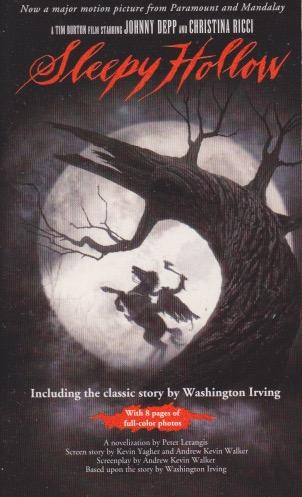
It must be both difficult and easy writing the novelization of a movie. I suppose it depends on the movie as well. Sleepy Hollow is a film based on a story already, but Washington Irving’s tale isn’t a novel and the movie was a collaboration between Irving’s original, re-envisioned by Kevin Yagher, Andrew Kevin Walker, and Tim Burton. The novelization was done by Peter Lerangis and it, naturally enough, follows the movie. As a novelizer, however, you need to try to make sense of some scenes where a film only implies what’s going on. Now, in this case I’ve seen the movie many times and any deviations come across as “that’s not the way it goes” moments. Still, it’s competently done. It even helped me make sense out of some things that had me puzzled since the start of the millennium.
In the “book or movie” debate I tend to think a book should be read first. Sometimes it should go the other way around. Novelizations are, of course, intended to increase the profits for a film. You’ve got the box office take, and if there are advertising tie-ins or other merch, you can add to the haul. A novelization can also help. In this case, the movie has a somewhat complex plot with revenge and double-crossing, and so a novel helps to make all that clear. However, when the novelist asks you to accept what a character is thinking you may have already come up with your own ideas on that point and any postmodernist would tell you that your opinion is just as valid as that of the writer.
Movie scripts tend to be a bit short for novels—if the movie isn’t based on a novel, of course—and sometimes extra material is needed. This novelization includes the public domain story by Irving as well, even though the movie completely recasts all the characters into unfamiliar roles. Brom, for example, is a minor part, whereas Katrina is a witch and Ichabod a constable from New York City. All of that having been said, there really aren’t many surprises here. I read this because I’m interested in the life of “The Legend of Sleepy Hollow.” Its many retelling and re-envisionings. The original story was published less than fifty years after American independence and has memories closer to the time. It tells us something of what it was like in those early days. And this novel both retells and redacts a movie already a couple decades old itself.
